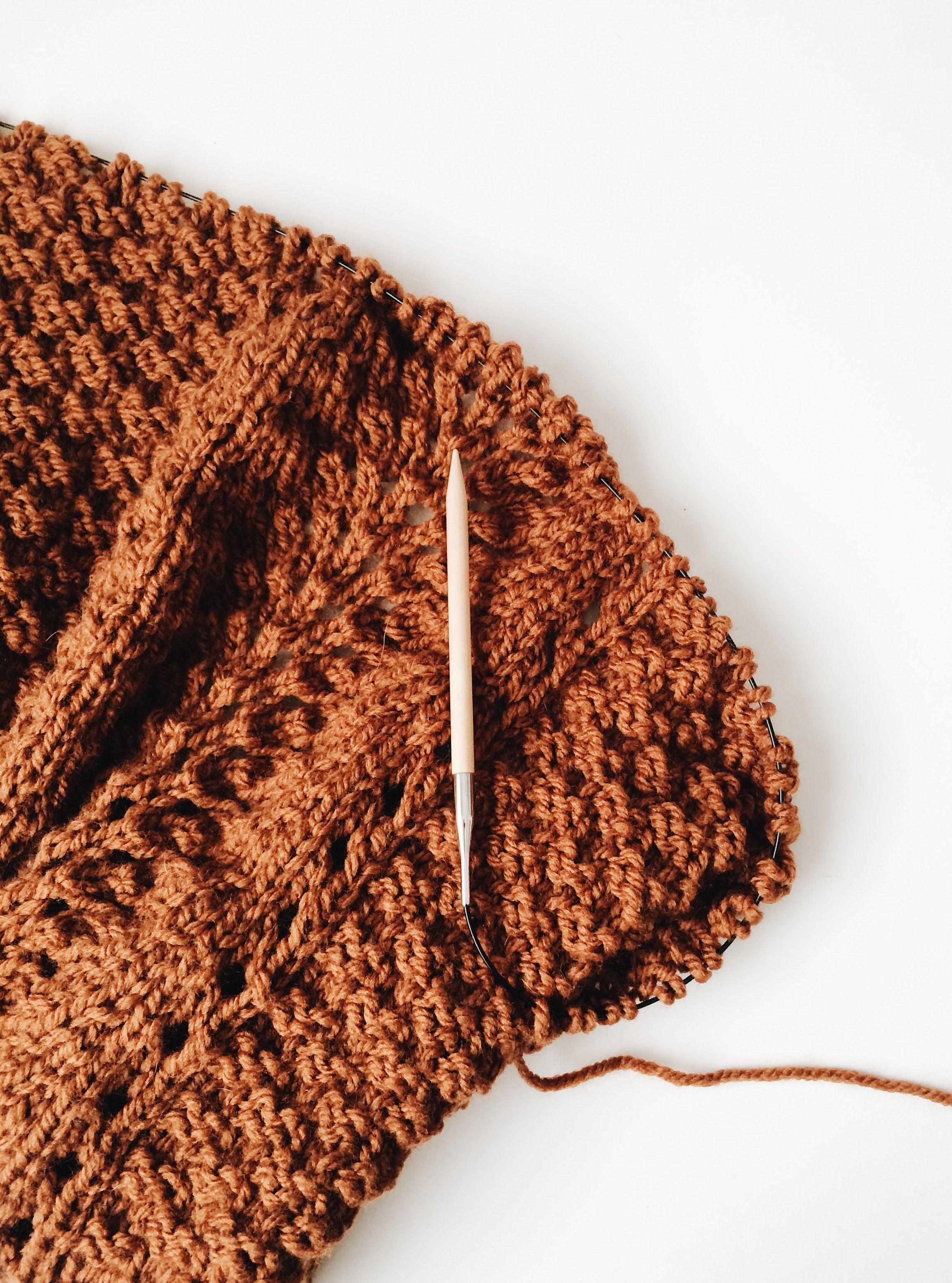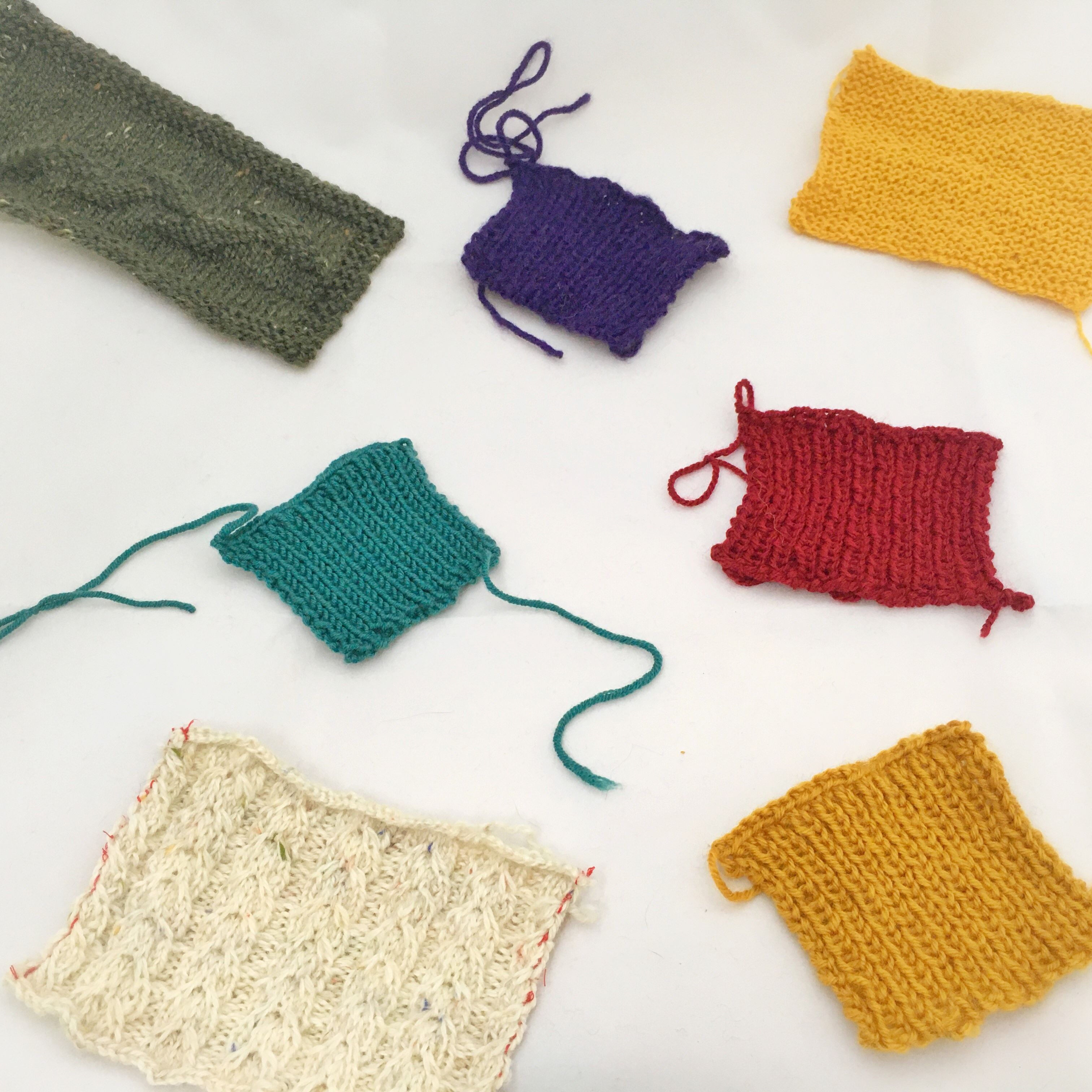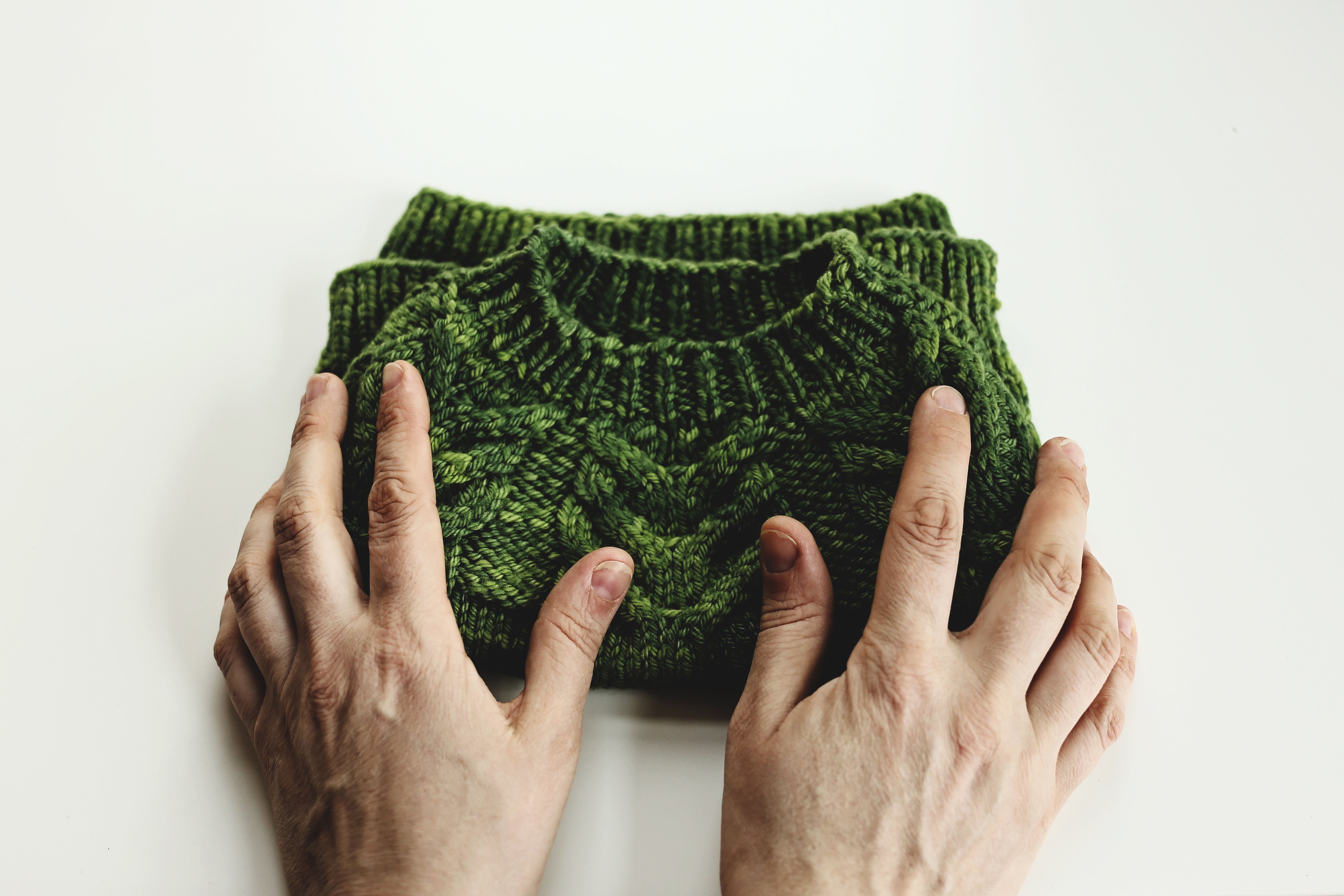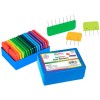Faced with the excitement of starging a new project and seeing it grow, the idea of "wasting time" making a swatch is so tempting. Is it really so important the swatch? If I use the same yarn and needles that the pattern says, everything will come out well, right?
Well, no.
Every person has a different knitting tension. In general, we can say that with the same yarn and size needles, on average, the tension can be more or less the same... but there are other factors that may affect: are the needles metallic or are they made of bamboo?, are we relaxed when we take the needles or we have a thousand battles in the head?, is the first time that we knit with this pretty yarn with silk?, maybe we are expert knitters but this is our first contact with a new to us technique like stranded knitting, that implies a change in yarn management and tension?,...
 |
The tools, materials, our mood... everything may have an impact in our knitting tension. There lies the importance of making a swatch fisrt, to anticipate problems that may appear.
But not only for the tension gauge is important to make swatches. Some fibers may change a lot from the yarn ball to the knitted fabric, in tension, perception, stitch definition... Maybe you loved a skein with speckles but once knitted it does not match with the stitch pattern that you chose... it's best to discover it in a 10 cm swatch rather than once you finished the sweater.
And finally but not less important: swatches must be treated as you will treat the final product. So: they must be blocked. There are yarns that once blocked become more fluffy and airy than what they looked in the yarn ball. That will change the final tension and appearance of the garment, giving unexpected outcomes... unless you did swatch.
Now, let's see the importance of making swatches and correctly count the swatches with an example.
Usually, to calculate a swatch the pattern makes us count the number of stitches and the number of rows (or rounds if we knit in the round) that there are in 10 centimeters.
Has it to be 10 centimeters? Can't we just do the numbers with 1 centimetre? Avoid laziness because is very important to have a significant measurement, and knit at least 10 centimeters.
First of all because, as you can see in the pictures, these stitches that we have knit, specially depending on what material we work with, do not always remain regular. Sometimes they take more space and sometimes less: when we have 10 centimeters we can count more stitches and get a more precise average, minimizing the margin of error.

In second place, using the 10 centimeters measure makes easier the calculations, multiply and divide, if we want to make our own pattern or adjustments.
Finally, you must also take the measure several times in different places of the swatch, to get an average, especially when there are differences in the stitches of the fabric. If you take the measure 3 times, you will use the value that repeats twice... if you get 3 different values, take the measure again. If all values are different, divide their sum by the number of times you took the measure to get the average.
For example: you measured 5 times and you counted 26, 27, 26, 25 and 27 stitches. Sum 26+27+26+25+27 (=131) and divide by 5 (the number of times that you measured). The result is 26.2, that rounded up is 26 stitches in 10 centimeters, although you can keep the decimal until the end of your calculations for a more accurate result.
Now imagine that the pattern says that your gauge must be 24 stitches and 32 rows in 10 centimeters (that means 2.4 stitches and 3.2 rows every centimeter).
If you didn't make the swatch, or if you calculated before blocking and the fabric expanded or shrunks after that, or you calculated it on fewer centimeters... it could be the case that you actually had, for example, 2.6 stitches per centimeter. It doesn't seem much, it's less than a stitch per centimeter, right?
So you knit a sweater for a bust circumference of 100 centimeters, for example. The pattern makes you increase to 252 stitches. And, according to the pattern, you should get a sweater with a positive ease of 5 centimeters.
But, as your tension is tighter, those 0.2 stitches per centimeter (2 stitches every 10 centimeters: 21 stitches in total) turned out in... a sweater which bust circumference is 96 centimeters and doesn't fit you.
Following the pattern for your size, following the stitches and doing everything right (except the swatch), you have waster time and material by not spending a few hours making a swatch.
Is it worth or not, doing a sample before starting?

Photo by Ksenia Makagonova on Unsplash
Do you need some tricks to avoid laziness making swatches?
There are lots of ways to cast on stitches and the same for binding off. Do you want to practice them before using them in your next project? Swatches are a good moment to learn new ways to cast on stitches and see how they look. Once you finished the swatch you can use a new to you bind off.
You can see some cast on methods in this post.
Another idea to fool your laziness? Keep your swatches and when you have enough you can sew them together in a sample blanket, like a knitted patchwork: see your swatches like a project by themselves.

